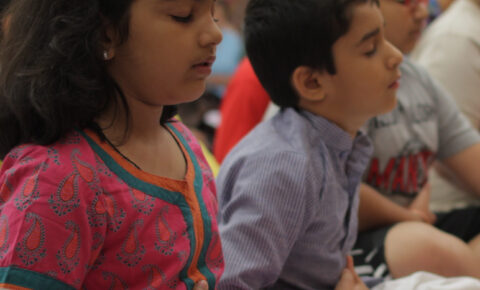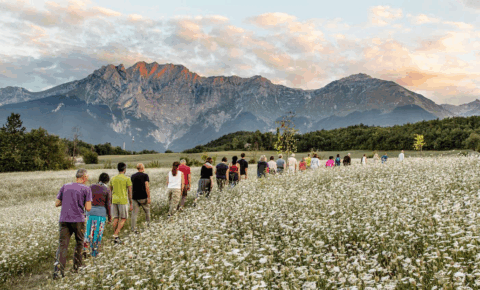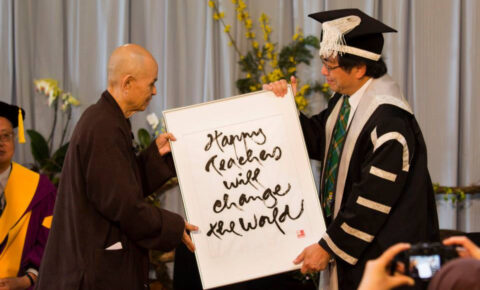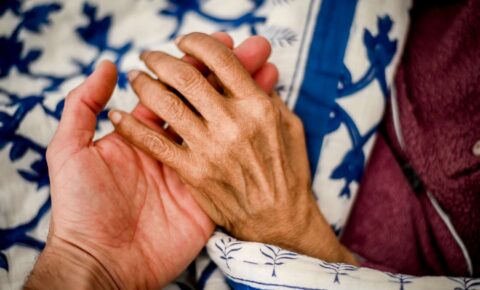Joost Vriens reflects on the connection between mindfulness and being a teacher. He was a teacher at a secondary vocational school for 40 years, supports Wake Up Schools and is a co-founder of a Dutch online Education Sangha.
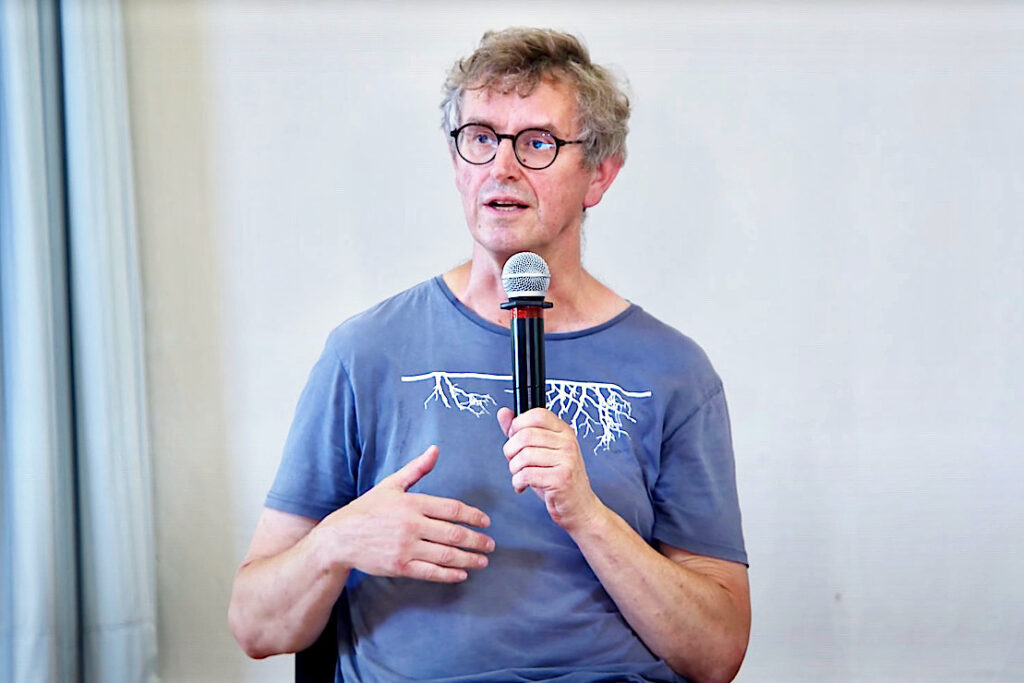
When reality hits
When I took my first steps into the classroom in 1982, I was a 22-year-old teacher of religion, idealistic, full of expectations and driven. But the reality was not heaven, but a learning environment. The school system I stepped into was in essence a delivery system. I talk, you listen. I know, you accept. There was such a strong conditioning that the students, even as adults or adolescents, were afraid to share, give, or express themselves.
My school was a vocational secondary school with students aged 17-23. They were going to work with disabled people, in childcare, youth care or education. It is a very transformational period, because they have to learn how to apply their knowledge, to grow from knowing to being. They are faced with an important question: What kind of professional helper of others do I want to become? So it is a very personal journey.
After a few years of teaching I started noticing something. The students not only silenced themselves out of habit, but also because the schools and the teachers didn’t listen to their hidden needs, their pains, their wounds. Then, another insight lit up. The teachers, many times uncertain, stressed, also hid their real thoughts and emotions upon entering the school. After 15 years of struggling with the system, I felt lost. I felt like I was shrinking, I became more defensive, the fire of the young teacher was almost extinguished.
Bells of mindfulness
Then one of my teachers, Sjef Bloemers, crossed my path. He was a psychiatric nurse with a lot of experience with (hidden) inner processes. I was by then an experienced teacher and could express how alienating and insular the teaching culture of the school was. He in turn taught me how to observe, understand, and connect. We were such a good team that the school offered us the opportunity to outline a new curriculum. We were lucky, the windows were open to the winds of a new approach.
The challenge was to transform the talking teacher into a listening, supporting coach. There was no existing protocol for that, neither for the students nor for the teachers. And that was a blessing. Our main task as teachers was to encourage students in a group to take the lead, to become aware of their own learning process, and to wake up to their potential. Sjef and I also started to share our personal histories with each other and with our students in the classrooms.
After six years, the wind changed again and became conservative. Our experiment had to stop and the angry warrior in me woke up again. Then somebody gave me a small booklet by Thay, called The Long Road Turns to Joy, about walking meditation. Slowly, slowly my eyes opened and I started looking inside myself. “Why are you so angry?” Sjef asked me this question once. He said, “You can explain Freud to those young people in such a way that they understand it. But the real practice is: How do you apply this process to your own behavior?” That was a very strong bell of mindfulness. I can still hear it within me.
During that period, there was an even stronger bell of mindfulness. Sjef became seriously ill with prostate cancer and I had to take over his duties. Six months later, I also walked out of hospital with a challenging diagnosis—pancreatic cancer. An intense treatment process followed. I survived this health crisis because I was able to listen to my body. Once, to keep me alive, they gave me a life threatening medicine. One morning, I woke up at 5 AM with a strange feeling in my belly and one thought: I must stop this medicine. It felt like the only place left in my body was a small circle around my belly button. Four doctors didn’t believe me, the fifth doctor was a young woman who would listen. She consulted her mentor and they decided that they should listen to this patient that listens to his body. The next morning, the blood results showed that I was right about the danger of the medicine.
In the sharing is the learning
I joined a small Plum Village sangha in Eindhoven. I looked at the facilitators and I noticed that they chose themes from the practice of Plum Village that they themselves were working with. To teach is also to work on yourself. Then I had enough courage to step forward and became a facilitator myself. That was a form of coming home to myself. After a while, I noticed that I became freer and more grounded in my work as a teacher/coach. During those sangha meetings I found my own voice. The lesson I learned was “In the sharing is the learning.”
To teach is also to work on yourself
As I deepened my practice in the sangha, I noticed that if I was not open and vulnerable during Dharma sharing, the Dharma sharing was quiet and superficial. If I was open, accepted the pain and my not-knowing, the sharing was rich and deep. A similar understanding of the school system grew in me. The students could not be vulnerable because the teachers and the system were not. During that time I also started to see that my students were submerged in a mindset of “I am not good enough.” I became curious about the internal processes of the students, how they were struggling with themselves, society, and the wounds they had. I then started to share my own growth process with them.
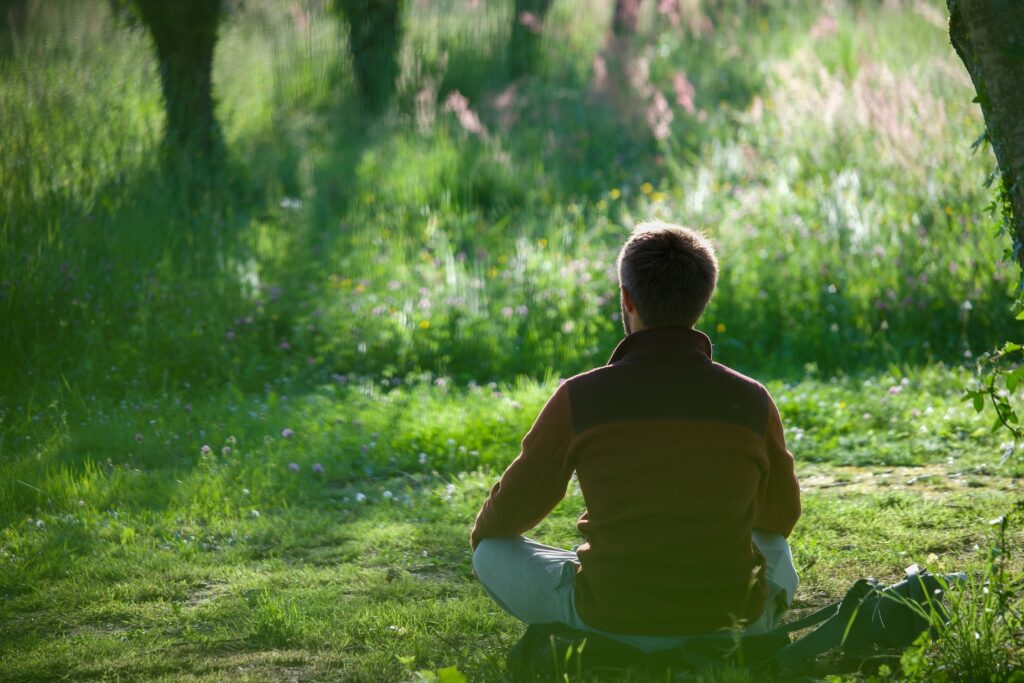
An intergenerational buddy system
I also started working with a very bright, talented young teacher, Ingrid. She was 28. I was 61. It was a very nourishing cooperation. She was very grateful for my experience and ability to look deeply into a situation. I loved her because of her strong questions, her vigor. She was very straightforward and open with her students, a sort of a peaceful warrior. We had very deep discussions of what was the best next step for a student. One day, early in the morning, we met with a student. The day before she had had a chat with both of us. We both gave her, independent from each other, the same advice. She wanted to check if we had planned that. We hadn’t and felt very touched knowing this.
Perhaps we can have “an intergenerational buddy system” in schools where a younger teacher is paired with an older teacher to support each other’s waking up.
The next step on my path was bringing mindfulness into the classroom. I felt I was ready for this, but the students were not. The classroom was not a safe place. The school was not a safe place. The school was not ready for it yet. Most of the teachers were not ready for it yet. I continued the struggle, because I remembered Thay who was so diligent in pushing boundaries and transformed obstacles into deep practical insights.
A gift from the universe
Well timed, Wake Up Schools stepped into my path. Somebody gave me the book Happy Teachers Change the World and Richard Brady’s very inspiring Walking the Teacher’s Path with Mindfulness. I also followed a teacher’s retreat with Tineke Spruytenburg and Miles Dunmore. I used the practices in the book and combined them with my own insights. While reflecting on my path of waking up as a teacher, the word “vulnerability” was very often there. Basho’s frog, A reference to Basho’s Haiku Frog in the pond: “The old pond; A frog jumps in—The sound of the water.” Translated by R.H. Blyth was finally jumping into the pond.
One day the universe sent me a gift. The gift was a young male student who was facing deep personal difficulties. I shared with him that I saw his suffering and was available for a chat. Three months later, he suddenly stood at my door and wanted to take a walk with me. He shared something very personal with me and was very vulnerable. I was deeply touched. He told me he was able to share because I had shared so openly about my illness, my doubts and about the challenges in the school system. That sharing changed his life and mine.
Vulnerability as a way of being
Looking back on this small but important encounter, there were two things that I learned. First, vulnerability is not a skill, not a trick, but a way of being. I “teach” this way of being to my students. Second, just like Master Linji, sometimes the host (teacher) becomes the guest (student) and the guest the host. My students also teach me something. From that moment on I stepped into the classroom with curiosity: What am I going to learn from them today? The core of my practice had been mirrored back to me by a vulnerable young man. Being a teacher became a joy.
With the students and teachers, I felt like I had become an artist, not literally, but metaphorically. I could feel the energy shifting in me, in the students, in the school. A bridge between the ultimate and historical dimension had manifested.
A new blend of the warrior, the meditator and the artist
In 2022, Baltus van Laatum invited me to join him in founding an online Educators Sangha in the Netherlands. During our first session, I felt like I had come home. Something deep inside was opening up. At first, people came to the online sangha because they were searching for mindfulness curricula, but we did not provide that. However, some decided to stay even though it was stressful and new to look at themselves. They felt vulnerable but they made steps forward. For them the safety was provided because everybody present was familiar with the situations and the challenges of being a professional teacher.
So our approach was to listen first, then offer questions. What kind of a teacher do you want to be and why? Are you happy with where you are now? What do you need? Can you see the causes and conditions? A teacher who can listen to another teacher is a very good contribution, because this person knows when you are stepping out of being yourself and falling into the trap of meeting expectations. Realizing the importance of exchange between teachers (and between teachers and students), I became a new blend of the warrior, the meditator and the artist.
Time for a new path
One morning, while walking to the school, I felt muscle pain in my back. Listening to its message, I understood that it was time to step onto another path. A voice within said, “You can be of more value within the community of Wake Up Schools. There you can give voice to the teacher’s insight and make a bridge to the practice.”
When I was at the Educators’ retreat in Plum Village in August 2023, I was a panelist during one of the sessions. Suddenly the two worlds connected, the monastic energy intertwined with the presence of teachers, in conversation. I looked at all those teachers that were looking at us and I saw their potential. They were filled to the brim with insights, practices, and questions. How to wake up that potential? How to light this fire? How to connect with all these potential Buddhas?
Going forward
Exchange and connection are what the education field and the Wake Up Schools community need most at this moment. My wish is that when teachers come to a retreat, we help the teachers to arrive at their own insight. The retreat can be more than just coming to receive teachings and practices. To do this, we would need facilitators that are able to inspire and create a safe and open ground so that teachers can ask deep questions, express their needs, their experience, and come to their own insights into how they can help each other. We could start with deep listening sessions, energized by questions like: What kind of teacher do you want to become? We could also choose to focus on one challenging situation that one might face within the typical ‘education’ system. We would collectively identify and understand what is needed there to help the situation. This can be a practice in vulnerability (which is difficult at school) and in offering and accepting support from a colleague-practitioner. Then the next step in the retreat would be connecting these needs and insights with an applied mindfulness practice. We can also create a support system for each other that will continue outside of the retreat. This way, Sangha and practice become a learning circle.
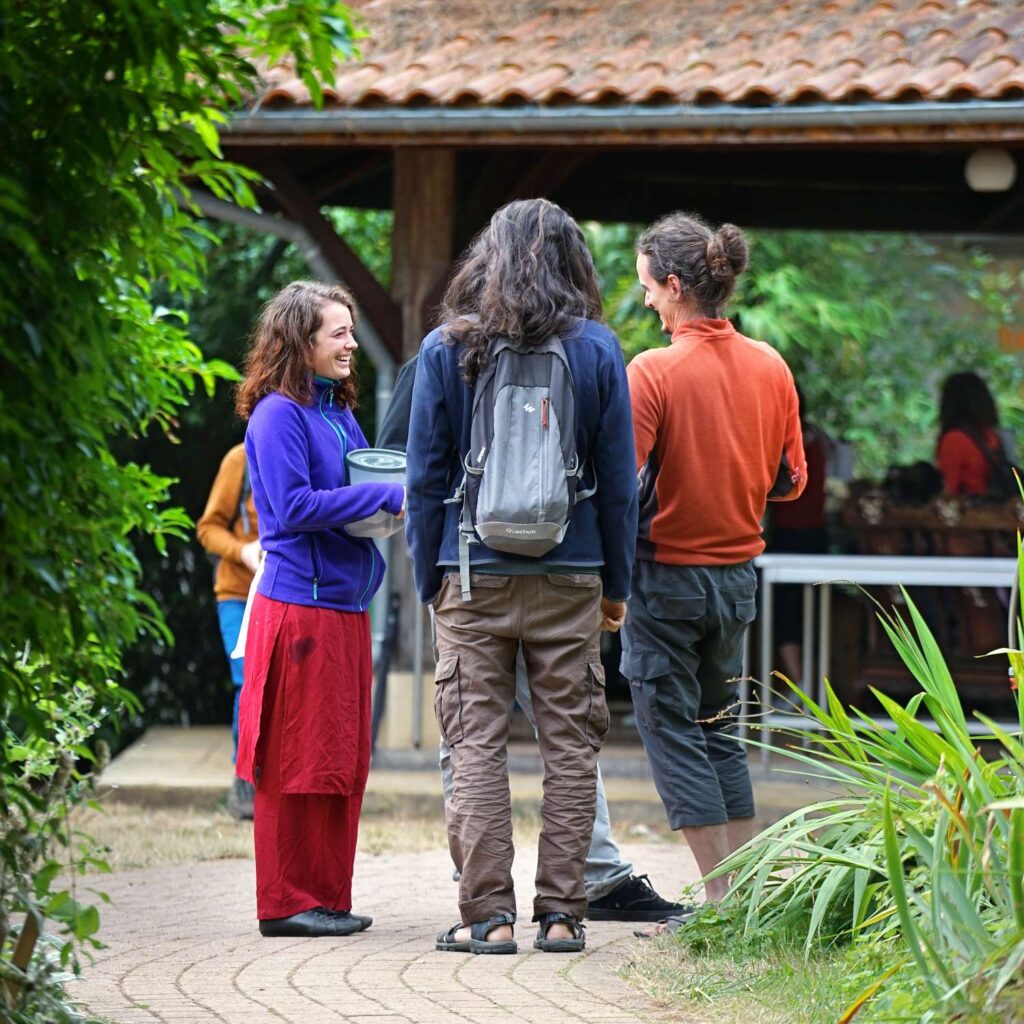
The image that keeps coming up in me is the teahouse in Upper Hamlet, where many conversations happened during the program breaks. I saw the light of connection there, the space to talk about visions and systems (of different types) and then people shared about themselves. My question would be: How would one manifest that light of energy and wakefulness into space, words and forms?
Further Reading

A Guide for Cultivating Mindfulness in Education.
Available at Parallax Press.


